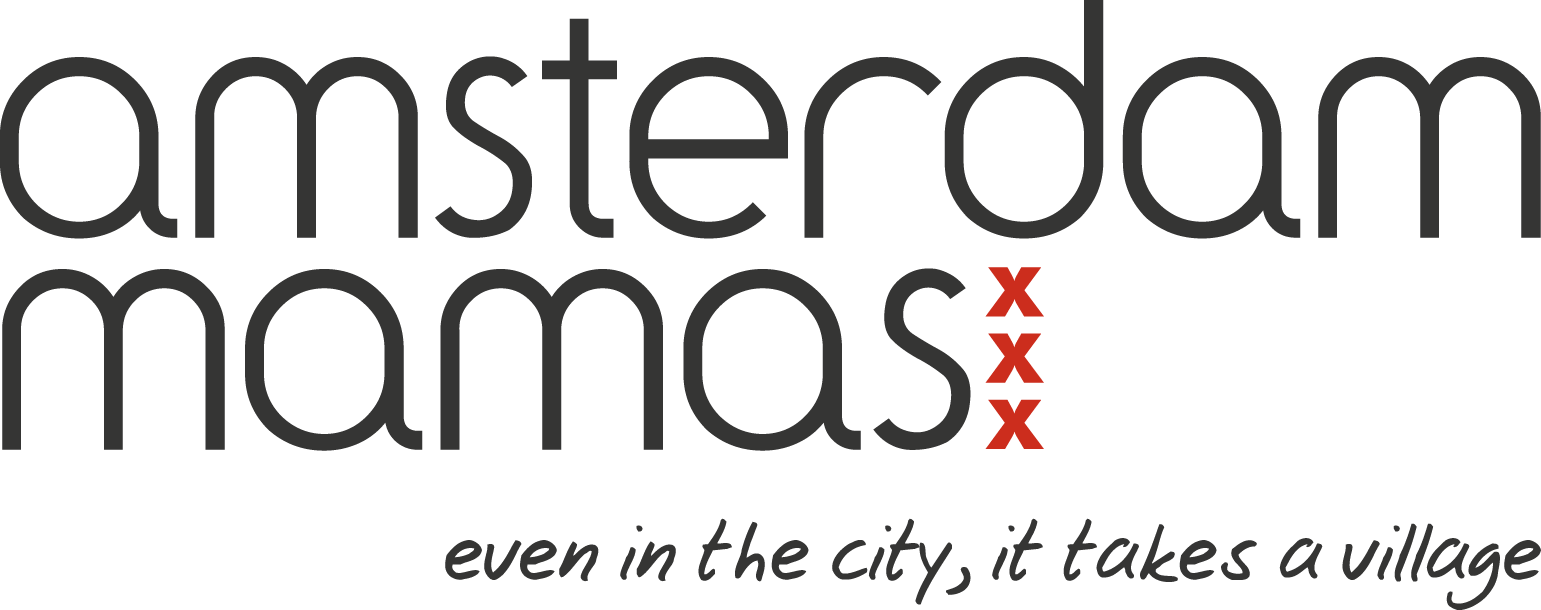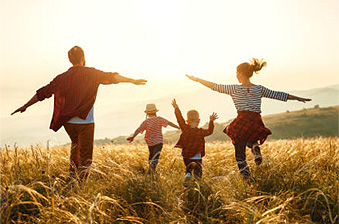As a multicultural community, Amsterdam Mamas encourages our members to share their culture’s holidays. Ramadan, Islam’s holy month of fasting, is celebrated with Eid-Ul-Fitr. Tasneem Hatimbhai shares her family’s journey of fasting and celebrations in Amsterdam during 2021.
What Is Ramadan?
Shehre Ramazan, or Ramadan, is the name of the ninth month of the Islamic year – the month when the Quran Sharif (the Koran -Islam’s holy book) was revealed to Prophet Mohammed. To honor and celebrate this month Muslims the world over refrain from eating and drinking anything from sunrise to sunset. Fasting during the month of Ramadan is one of the pillars of Islam. Barring the exceptions of being unwell, pregnant, travelling etc., all adults are expected to fast during this holy period.
Here, I hope to share the joys this month lends.
Why? There are several reasons for fasting – I suppose they include physical, mental, spiritual cleansing, a time to slow down and look inwards etc., but that is not the scope of this article. Here, I hope to share the joys this month lends. The month commences with 30 days of fasting and culminates with a big celebration – this day of revelry is known by different names in different languages but the most common one is Eid-ul-Fitr. In The Netherlands, perhaps owing to the large quantities of sweets consumed, it is called Suiker Feest.
While Ramadan is foremost a month of prayer and introspection, it is also a month of wonderful family time and a time for the daily preparation and consumption of especially delicious foods at sundown. Like most traditions, every home, community and country has slightly different practices that they follow during Ramadan. However, the basic practice remains the same:
1) The family wakes up well before sunrise to eat breakfast, called Sihrori in Arabic, and guzzles down as much water as is possible at that hour
2) This is followed by morning prayers, and then back to bed for a quick snooze before the day begins.
3) At sundown – an hour which differs considerably depending on the time of year and country you live in – you pray evening Namaz and ‘break your fast’ with a date and water or milk. Why a date? Because this is what Prophet Mohamed ate to break his fast! Dates also have plenty of natural sugar to give your body an energy boost after a day of fasting.
4) Breaking the fast is followed by a delicious savoury meal called Iftaari. It’s common to invite friends over for Iftaari and share your meal, or go out to different eateries serving iftaari, like Khao Gali in Bombay. I know this tradition is also common in Dubai, Cario and Kuala Lumpur where street food vendors are open all night during Ramadan.
The Food
The Muslim community in India, where I come from, is well over 11 per cent of the population, spread all over the sub-continent, and each follows slightly varied traditions in Ramadan. In my hometown, Bombay, at sundown we firstly pray, eat a date, and then start on the daily gastronomic feast. We make two special drinks for Iftaari:
Gud Ka paani: made by soaking jaggery in water for a day and then drinking it chilled with soaked chia seeds and lime juice.
Harira: a delicious, warm, milk-based drink prepared by roasting almonds and pistachios in ghee (clarified butter) and then adding to it milk and sugar and allowing it to slowly simmer while constantly stirring, so the speckled liquid thickens and turns sublimely delicious.
The gud ka paani is prepared because it is especially ‘cooling’ during the warm fasting days, while the harira is full of good fat – required to pep you up and keep you going during the fasting period.
This is followed by fruit, chai, and then then a variety of savoury delicacies ranging from deep fried mince samosas, mince cutlets, bhajjiyas of onions or potatoes, different bakes, kebabs and any other favourite food of the family. Often, the Iftaar also serves as dinner but sometimes you might reach for a post-iftaar snack or meal before you go to bed. For me the first few days and the last few days of fasting are hardest. The first because my system has to get used to not being indulged several times a day, and more so, being denied it’s caffeine fix. The last few days are the final lap and tend to drag on.
Eid-ul-Fitr
Luckily, the thing to look forward to that makes the long fasts manageable, is the grand day of celebration at the end of the month of fasting! Eid-ul-Fitr is celebrated, when possible, by meeting extended family and friends, by having one or several meals together as you pop in to visit relatives, and by thanking God for the joy He bestows on your family. Most often children, or even the whole family, get new clothes. Girls get to decorate their hands with henna. Men and women both rush to the hair salon for a colour or style, which were neglected during fasting.
Here we saw cousins (the ones we liked and those we hated), aunts, uncles, grandparents, newborns, slightly estranged family members, newly acquired family members, in-laws of second-cousins etc. – each one dressed to the hilt, flaunting freshly coloured hair (no greys), deep brown henna on the hands, and brandishing a new piece of jewellery if they were lucky enough to have acquired one.
My strongest memory of Eid is visiting my grandparents, aunts and uncles, and family friends, mostly in order of seniority by age – starting with the oldest and working our way down. At each home we would do a salaam to the adults (kissing their hands as a sign of respect) and in return receive a crisp white envelope with a crisp note of money as Iddi (Idd present). The amounts of money received varied, but I am certain the aunts used to call each other and pre-fix an acceptable amount for a certain category of relative. The Iddi could be pocketed and spent as you wish, however, my Iddi went into a ‘collection pouch’ that lay safely with my Mom and was used to make me a piece of jewellery when an adequate amount had been saved – often over several years. Each home we visited also offered a small cup of Sev Khurma – a delicious sweet made with ghee, vermicelli, nuts, milk and a special dried version of a date called kharak. By the end of the day, we might have gone through 10-12 cups of this indulgence, and yet, always had space for one more at the grand finale of the day – the Idd party. This event was held at the home of my uncle, who literally invited everyone!! Here we saw cousins (the ones we liked and those we hated), aunts, uncles, grandparents, newborns, slightly estranged family members, newly acquired family members, in-laws of second-cousins etc. – each one dressed to the hilt, flaunting freshly coloured hair (no greys), deep brown henna on the hands, and brandishing a new piece of jewellery if they were lucky enough to have acquired one. The meal mostly included sev khurma, biryani, Hyderabadi kebabs, nalli niharis, fresh naan, chatter, love and a growing warmth, that even surpassed the childhood grudges held against mean cousins, and made the day more special each year.
Eid-ul-Fitr in the time of COVID-19
The coronavirus pandemic has been tragic for families who have lost loved ones. For others it has meant not being able to travel home to see family, and it has also meant the debilitation of several wonderful celebrations like Eid-ul-Fitr. This year we were lucky to celebrate Eid with friends who are like family, in Amsterdam.

The day started out, much to the dismay of the kids, with a(nother) wake-up before sunrise for special Idd prayers/Idd Khutba. After praying, we ‘broke our final fast’ symbolically, with a special date and then ate a non-traditional pancake breakfast before everyone went right back to bed only to wake-up to online school or work a couple of hours later! The special date (kharak) is quite particular to my community and is prepared by soaking a dried date in rose water for 24 hours, then de-seeding and drying the now slightly softened date, and finally stuffing it with a mixture of almonds, pistachio, and sweetened mawa (reduced milk cream). A traditional breakfast would have involved eggs, kheema (spiced mince), naan and of course Sev Khurma but the pancakes and maple syrup were a treat enough for us.
Since we couldn’t have an Idd party for our friends – a wonderful, annual tradition we started in Amsterdam a few years ago – we decided to celebrate the day with a food crawl through the amazingly eclectic and vibrant Dapper and Java buurt. These streets are lined with the most amazing eateries – we started with a Turkish pizza at Bakkerij Bereket on the Eerste van Swinden Straat and then crossed over to Authentic India for chai, mango lassi, and spicy samosas. We then walked to over to Sweet Asia to pick-up an old time favourite, an alleged beef dish baked for 24 hours in a clay pot but unfortunately we ended up with a beef kerrie – probably owing to our awful description of the dish we wanted. Still we ate it greedily in a children’s play area below the train tracks and a solitary cherry blossom tree at the start of the Javastraat. In order to balance the Indian samosa, we hopped over to Pakistani Curry House for a fiery Samosa chaat, which we then doused with a mild haloumi wrap at Tigris and Euphrates. We finally ended with ice-cream, not at the chic ice cream shop on Javastraat but with soft ijs at the Febo on Javaplein and coffee from the Coffee Company. With full bellies, and tired feet we walked home and instead of playing the intended Game of Thrones … we succumbed to Netflix and uitbuiken.
Tasneem Hatimbhai
Tasneem Hatimbhai is originally from Bombay, India and lives in Amsterdam with her Dutch husband and their two children. She has been a writer and editor for over 20 years, focussing on lifestyle related articles, features about contemporary Indian Art, content creation for academic websites, journals and social media for related accounts. In 2012, she started Mumbai Mills, an NGO that blended Indian creativity, art and design. Mostly recently, in 2024, in keeping with her love for contemporary Indian art, Tasneem launched an online platform and an art gallery for South Asian Contemporary Art in Amsterdam, @sacart.ams. She also happens to be the editor-in-chief of Amsterdam Mamas.






